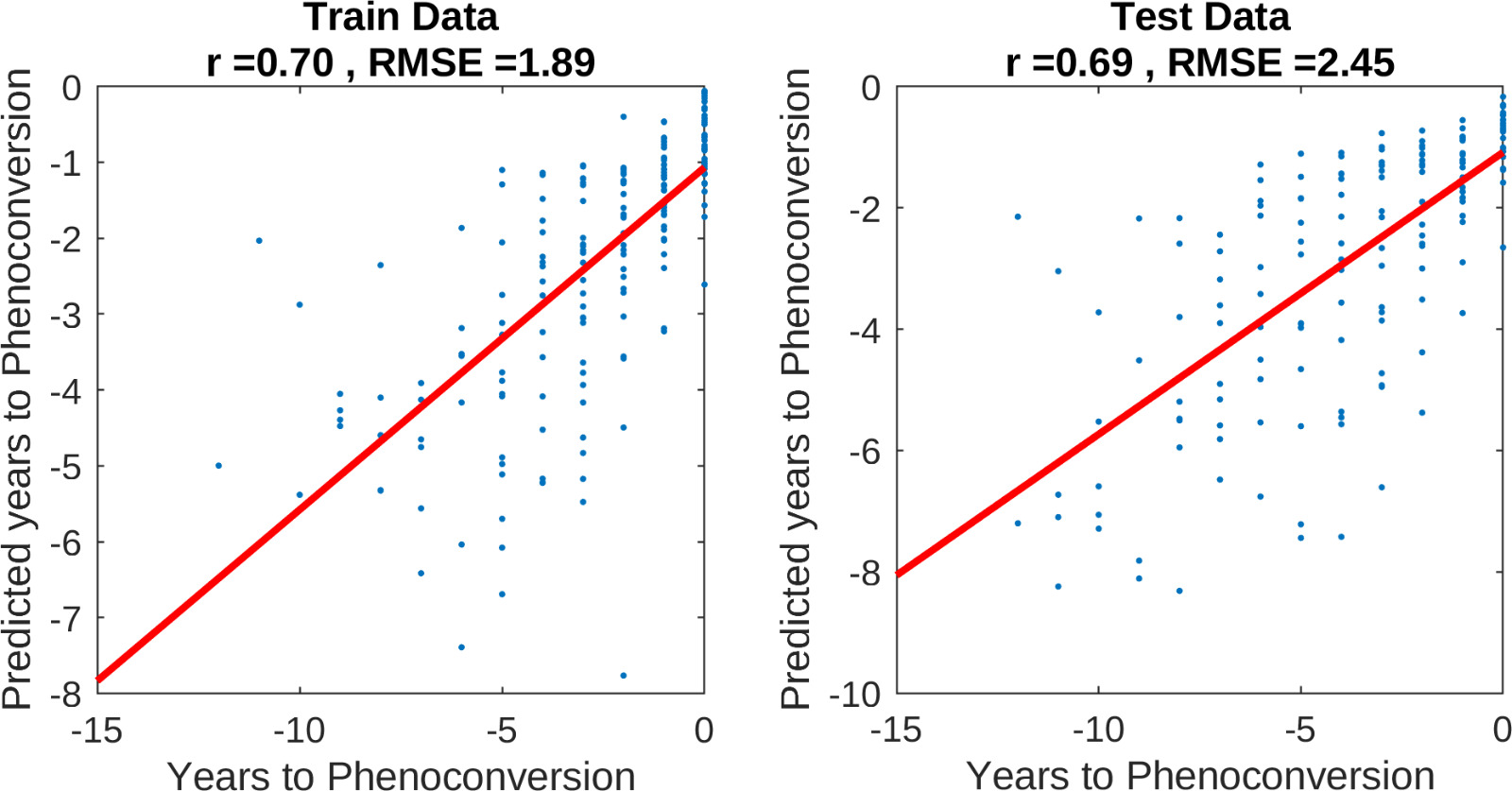Objective: To develop a tool for the prediction of time-to-phenoconversion in individuals with iRBD during the prodromal stage of parkinsonism.
Background: Parkinson’s disease(PD) and dementia with Lewy bodies(DLB) are preceded by a long prodromal stage with sub-clinical motor and non-motor manifestations. This long prodromal stage is a precious opportunity for neuroprotective interventions, yet there is no marker to predict time-to-phenoconversion during this period.
Method: We retrieved longitudinal data on an extensive list of prodromal features in 85 individuals with iRBD from the Montreal RBD cohort, all of whom phenoconverted to either PD or DLB during follow-up(range: 2–18 years). The cohort was divided into two datasets: the ‘Training’ consisted of 55 iRBD cases in whom we previously analyzed their prodromal trajectory [1], and the ‘Testing’ consisted of 30 participants with iRBD who had recently phenoconverted since the publication of our previous report. A mixed-effects model was created using the ‘Training’ dataset to predict the time-to-phenoconvertion based on the longitudinal evolution of the severity scores for motor and non-motor prodromal manifestations. Next, the performance of this model was assessed in the ‘Testing’ cohort to test the accuracy of these predictions. The root mean squared error(RMSE) was calculated as an indicator of prediction accuracy.
Results: The average baseline age was 64.6±9.5 yr in the ‘Training’ and 66.3±7.4 yr in the ‘Testing’ cohorts with an average follow-up time of 4.6±2.5 and 5.5±3.5 yr respectively. The best statistical model consisted of motor signs(MDS-UPDRS-III score), motor testing(Purdue pegboard, alternative tapping test, 3-meter timed up-and-go), olfaction(UPSIT score), and constipation achieved R square of 50% to predict time-to-phenoconversion with an RMSE of 1.9 years in the ‘Training’ dataset. The model successfully predicted the time-to-phenoconversion in the ‘Testing’ cohort(r=0.69,p<0.001) with an average error of 2.4 years when compared to the actual time of phenoconversion(Figure 1).
Conclusion: Our findings provide a promising tool to predict the time-to-phenoconversion during the prodromal stage of parkinsonism, which is highly relevant to the design of neuroprotective clinical trials. The estimation error of 2.4 years is an acceptable variance in this context with high inter-individual variability and a long duration of the prodromal stage.
Figure 1
References: 1. Fereshtehnejad SM, Yao C, Pelletier A, Montplaisir JY, Gagnon JF, Postuma RB. Evolution of prodromal Parkinson’s disease and dementia with Lewy bodies: a prospective study. Brain. 2019; 142(7): 2051-2067.
To cite this abstract in AMA style:
SM. Fereshtehnejad, A. Delva, Y. Zeighami, M. Dadar, A. Pelletier, J. Montplaisir, JF. Gagnon, C. Marras, R. Postuma. Prediction of Time-to-Phenoconversion to Parkinsonism in Idiopathic REM Sleep Behavior Disorder (iRBD) [abstract]. Mov Disord. 2024; 39 (suppl 1). https://www.mdsabstracts.org/abstract/prediction-of-time-to-phenoconversion-to-parkinsonism-in-idiopathic-rem-sleep-behavior-disorder-irbd/. Accessed December 22, 2025.« Back to 2024 International Congress
MDS Abstracts - https://www.mdsabstracts.org/abstract/prediction-of-time-to-phenoconversion-to-parkinsonism-in-idiopathic-rem-sleep-behavior-disorder-irbd/

